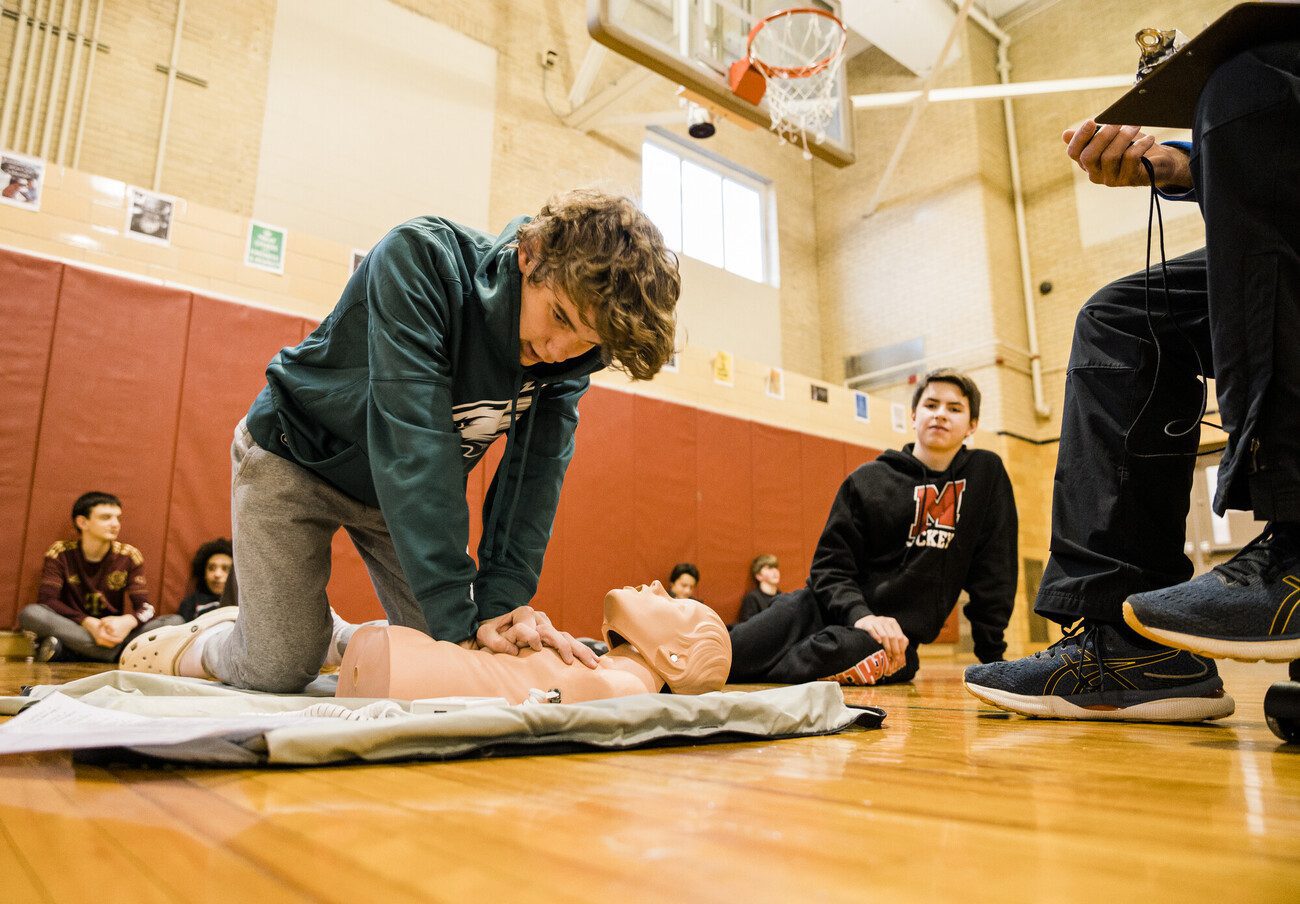MARBLEHEAD — With around 350,000 people dying from cardiac arrest in the United States every year, Marblehead Veterans Middle School understands cardiopulmonary resuscitation (CPR) is a vital skill for all eighth students to learn.
“It was a necessity because if you look at the statistics, 88 percent of the time, you are doing CPR on a friend or a family member,” said Patrick McIntosh, a physical education teacher for Marblehead Veterans Middle School.
The CPR class is offered as the first unit during the third quarter of the year for all eighth graders as part of their Physical Education Course.
Eighth graders are taught the importance of performing cardiopulmonary resuscitation (CPR) in 11 steps during a life-and-death situation, “People usually freak out when they don’t have the skills, by giving them the skills it should keep them calm, they’ll have a toolbox to play and use and knowing that there are 11 steps that they need to follow,” said McIntosh.
The unit was introduced in 2006 by a school nurse and a nurse coordinator for the district as a necessity for students in the eighth grade. Since then, 95 percent of all eighth graders who take the CPR class as part of the curriculum go on to take the exam to earn their CPR Certification card.
“We strongly recommend that they take the certification because they are working, and they are getting into that age where they will start to get jobs that require CPR. Whether it is camp counselor, a camp counselor in training, or a lifeguard,” said Kyle Wachtel, a physical education teacher for Marblehead Veterans Middle School.
“It’s age-appropriate because eighth graders are looking for responsibility. They are looking to demonstrate that they’re becoming teenagers and young adults. So, this is the first step to taking responsibility. Most of the kids take this seriously,” added Matthew Fox, principal of the Marblehead Veterans Middle School.
In the unit, students practice on mannequins with sensors that give them immediate electronic feedback and current changes for the depth of the chest compressions and the rate they are performing on.
“We help them understand what the difference between cardiac arrest is and a heart attack is. We talk to them about the vital steps of CPR. The differences between what you do with an adult and what you do with a child, about when to call 911 and when to get the AED (Automated External Defibrillator),” said Wachtel.
Over the years, the school has made decisions about how to teach the CPR unit based on data from the American Heart Association (AHA). About five years ago, the AHA suggested performing CPR “hands-free”, but McIntosh and Wachtel chose to continue teaching their students to perform breaths and compressions, and to perform only compressions when they are unable to give breaths.
A recent study conducted by the American Heart Association on cpr.heart.org assessed the ability of sixth graders to save lives by correctly performing Hands-Only CPR. According to its findings, “the majority of children could perform CPR in the correct location and at the appropriate compression rate, making this a viable group to train to help save lives.”
“In fact, the AHA is dedicated to training the next generation of lifesavers through its CPR in Schools program. We led the charge to make CPR training a high school graduation requirement in 34 states – and counting!”
“We still recommend that they give breathes because again the statistic shows that it’s most likely a family member or a friend who you are performing CPR on,” said McIntosh.
Fox points out how students are reminded of when and why CPR is important. Just last month, millions held their breath during an NFL game when player Damar Hamlin’s heart stopped. “I think this year, it was very poignant given the fact that a chunk of America got to see CPR in effect in the NFL recently when the player went down, when his heart stopped. I think that’s a connection right now that both of our teachers have made with our students,” Fox said.
Eight graders who choose to become CPR certified must re-certify every two years. In 10th and 12th grade health class, students have the opportunity to take the CPR re-certification.

